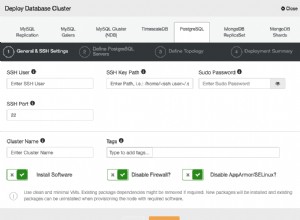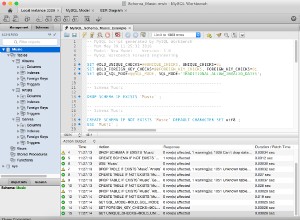Vous pouvez utiliser une requête récursive dans MSSQL pour résoudre ce problème.
La première requête récursive construit un arbre d'éléments avec une somme cumulée <=150. La deuxième requête récursive prend des feuilles avec une somme cumulée =150 et génère tous ces chemins vers ses racines. Également dans les résultats finaux classés par ItemsCount vous obtiendrez donc les groupes préférés (avec un nombre minimal d'éléments) en premier.
WITH CTE as
( SELECT id,num,
id as Grp,
0 as parent,
num as CSum,
1 as cnt,
CAST(id as Varchar(MAX)) as path
from T where num<=150
UNION all
SELECT t.id,t.num,
CTE.Grp as Grp,
CTE.id as parent,
T.num+CTE.CSum as CSum,
CTE.cnt+1 as cnt,
CTE.path+','+CAST(t.id as Varchar(MAX)) as path
from T
JOIN CTE on T.num+CTE.CSum<=150
and CTE.id<T.id
),
BACK_CTE as
(select CTE.id,CTE.num,CTE.grp,
CTE.path ,CTE.cnt as cnt,
CTE.parent,CSum
from CTE where CTE.CSum=150
union all
select CTE.id,CTE.num,CTE.grp,
BACK_CTE.path,BACK_CTE.cnt,
CTE.parent,CTE.CSum
from CTE
JOIN BACK_CTE on CTE.id=BACK_CTE.parent
and CTE.Grp=BACK_CTE.Grp
and BACK_CTE.CSum-BACK_CTE.num=CTE.CSum
)
select id,NUM,path, cnt as ItemsCount from BACK_CTE order by cnt,path,Id




